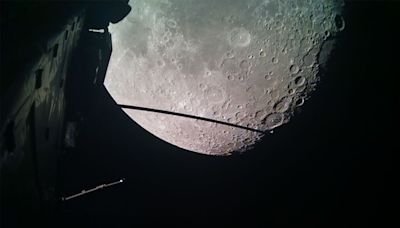Search results
Jupiter is about ten times larger than Earth (11.209 R 🜨) and smaller than the Sun (0.102 76 R ☉). Jupiter's mass is 318 times that of Earth; [2] 2.5 times that of all the other planets in the Solar System combined.
- Radius, Diameter and Circumference
- Density, Mass and Volume
- Additional Resources
- Bibliography
Jupiter has a mean radius of 43,440.7 miles (69,911 kilometers), according to NASA Science. That's about a tenth that of the sun. However, its rapid rotation — it spins once every 9.8 hours, according to the journal Acta Astronautica— causes it to bulge at the equator, where the diameter is 88,846 miles (142,984 km). In contrast, the diameter at th...
Known as a gas giant, Jupiter is composed primarily of hydrogen and helium, according to NASA. It weighs in at 1.9 x 1027 kilograms. Although it is significantly more massive than Earth, it is only a fifth as dense, at 1,326 kg/m3, because it is made of gas rather than rock. The volume of Jupiter is 1,431,281,810,739,360 cubic kilometers, 1,321 tim...
You can learn 10 key facts about Jupiter at NASA Science's Solar System Exploration page. Alternatively, this video by NASAeClipsexplains the Astronomical Units (AUs) used to scale the solar system.
"Solar System". Boss, Alan P. AccessScience (2019). https://www.accessscience.com/content/solar-system/633800, McGraw-Hill Education "Interiors of giant planets inside and outside the solar system." Guillot, Tristan. Science (1999). https://www.science.org/doi/abs/10.1126/science.286.5437.72 "Galileo preparing for Jupiter arrival". Acta Astronautic...
Jan 11, 2024 · Jovian Magnetosphere. Model GSFC-O 6. Dipole field strength: 4.30 Gauss-Rj 3 Dipole tilt to rotational axis: 9.4 degrees Longitude of tilt: 200.1 degrees Dipole offset: 0.119 Rj Surface (1 Rj) field strength: 4.0 - 13.0 Gauss. Rj denotes Jovian model radius, defined here to be 71,398 km.
2 days ago · Jupiter, the most massive planet in the solar system and the fifth in distance from the Sun. It is one of the brightest objects in the night sky; only the Moon, Venus, and sometimes Mars are more brilliant. Jupiter takes nearly 12 Earth years to orbit the Sun, and it rotates once about every 10 hours.
With a radius of 43,440.7 miles (69,911 kilometers), Jupiter is 11 times wider than Earth. If Earth were the size of a nickel, Jupiter would be about as big as a basketball. From an average distance of 484 million miles (778 million kilometers), Jupiter is 5.2 astronomical units away from the Sun.
Apr 19, 2024 · It is the biggest planet in the solar system, and it has a diameter of 89,000 miles (143,000 kilometers). Distance from the Sun: It is the fifth planet from the Sun. Its orbit is about 483...




